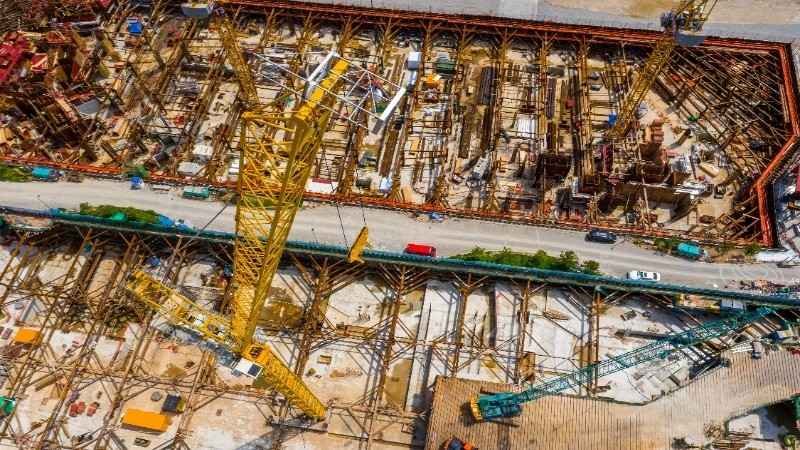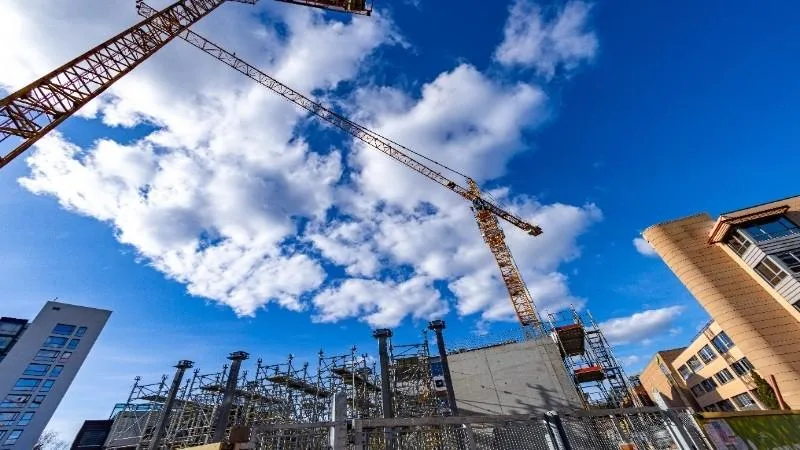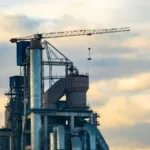Know what industrial construction is and what are some of its types
Industrial Construction:

There’s a huge misconception when it comes down to construction industry that it deals with residential and commercial projects only. But that is not it. It has several other types of construction as well. Know what industrial construction is and what are some of its types.
In our previous articles, we covered about Residential and Commercial construction. Moving forward, we will be discussing about the Industrial construction and its examples.
Industrial construction refers to the construction of projects or business ventures that has to do with manufacturing goods or the likes. These projects are made for the industrial use.
There are various examples such as:
1). Manufacturing plants
2). Power plants
3). Oil refineries
Also Read: Commercial Construction: Know the types and your investment opportunities accordingly.
1. Manufacturing plants:

Manufacturing plants are like big factories that make things quickly and accurately. The products are made in a controlled setting to make sure its quality is not compromised and in bulk. High standards are maintained in this setting.
Nature of goods:
Many plants tend to custom manufacture their product for targeting a specific need among the customers. These can be outsourced as well but the main purpose for building a manufacturing plant in the first place is to have a full grasp and control over each and every aspect of the goods.
In case of any due changes, it doesn’t have to involve a third party or to acquire their permission to do so.
Professionals with specialized skill set:
It involves coordinating a lot of different people and group. Because of its magnitude and scale, a lot of specialized engineering is usually needed for these kinds of projects, and the materials used are often different from what is used on other Industrial Construction projects.
So the people operating the equipment’s are also required to have specialization in it for smooth operations. A lot of thought goes into this kind of construction project because of its scale, its complexity and operational design etc.
Hence, only those equipped with proper skill set to build and construct industrial sector should take over. The entire process from manufacturing to designing, engineering, production, logistic, after service has to be prime perfect.
Structural transition:
The first phase happens to be the kind of structure one has on mind, given their requirements and as allowed by the governmental laws as well. It is a job only for the professionals in line such as engineers and architectures etc.
Blueprints, ideas, diagrams etc are used to build the plants. Changes are made accordingly if it is needed. The resources to be spent on this kind of project are huge compared to residential and commercial projects. By hiring professionals, one can eliminate risk factor to some extent. This way whole project can move forward efficiently. More Information…
Significance:
One of the most important role these projects play in the long run is creating employment Industrial Construction. When new facilities are made, right kind of people are needed with the special skill set to operate special equipment. This also create a change in the market equilibrium for demand and supply.
An opportunity for creating the demand in the market for the much needed manufactured goods that would not have existed otherwise. Manufacturing plants are one of the sources for creating a good wealth and promote business sector within the country.
Sales taxes, taxes paid by the company, by employees and those on goods generate huge income for the region.
Government’s role:
Governments often put more rules on industrial projects, especially when it comes to how they affect the environment. It also is as per the government laws where the permission is granted for such a plants to be built. The operation of manufacturing plants for its day-to-day operations also fall under the governmental regulations.
Examples:
Manufacturing plants has various types and requirements. It depends on the kind of machinery is needed to operate the plants are specialized in. There are many factories that make products for everyday use such as food, clothing, toys, furniture, paper, glass etc.
The kind of manufacturing plant that you wish to make depends entirely on the nature of your products and the materials that are to be used in its manufacturing. Common types of manufacturing plants include the following:
1). Food production plants
2). Furniture factories
3). Clothing factories
4). Textile plants
5). Automotive plants
6). Steel mill
7). Automotive plant etc
Some of these plants are complex in nature while others could have some standard features.
Also Read: Construction: there’s more to it than what meets the eye
2. Power plants:

Power plants, as the name suggests itself, facilities that are built to generate or produce electric energy by using a primary energy to convert into another form. These primary energies can be as follows:
1). Heat (thermal)
2). Coal
3). Fossil Fuel
4). Natural gas
5). Nuclear energy
6). Hydroelectricity
7). Sustainable energy
8). Biomass
9). Solar Energy etcare some of the most popular types.
Significance:
Power plants are have become one of the major need on the world across. Why? Because the natural resources are in abundance but with the way human beings have handled things relevant to environment, think of it as being the “backup” in order to supply and fulfill the electrical grid for society’s electrical needs.
Another fear being the scarcity of resources. With the more evolution of civilization and human beings, comes latest and evolved needs that need to be catered. One cannot simply use the primary energies as it is. There has to be a proper mean to channel that energy into something else and make it available to all for usage.
For this purpose, we have power plants, without which all the businesses, nations and the progress they have made so far would not be possible. Think about the olden times. Would you even consider travelling all the way to another country or another region, per say, 20 blocks away on your foot just to deliver a message in person? No.
Because we have the electrical means, technology and gadgets to do so for us. With more advanced tech and needs, come more advanced things and matters to take care of. All the energy that is needed to power up the society’s former needs to go on is what power plants are for.
Need for various sectors:
All sectors such as residential, commercial, industrial etc need the power plants. Various power plants are then established to cater different sectors and targeting. The capacity is also analyzed as per the target audience and focus. For example, you cannot expect a power plant that has been established solely for industrial use to power just a single house. That would be too much for the end user and not to mention the wastage of resources. Vice versa for the industrial plants.
Effect on Health:
Power plants are also one of the main reason and major contributor in air pollution. Formation of ground level Ozone layer, Greenhouse gas emission, carbon dioxide, toxic heavy metals such as mercury, Nitrogen oxide etc have been top contributions of power plants.
All these also result in acid rain, which damages lakes, streams, forests, grasslands, and other ecosystems among other things.
Also Read: Residential: Know your options before you plan for your own space.
3. Oil refineries:

Such refineries are for converting crude oil and other liquids into many petroleum products. It is what people use every day in life because of which transportation has been made possible in today’s era. Most refineries have the same production focus for meeting the transportation needs.
Oil refineries turn crude oil into goods that can be used as fuels for cars, homes, roads, and power plants, as well as components for making chemicals. Different parts of crude oil are separated during refining and then put back together in different ways to make new products.
Types:
In the world, there are four different types of refineries:
1). Topping
2). Hydro-skimming
3). Conversion
4). Deep conversion refineries
Each plant is built differently to make sure that its products meet the standards of the country where it is located, depending on the market it wants to reach.
Topping refinery:
It is of the most important refineries with a very simple processing configuration. A topping refinery works best in places with fewer rules about processing because its main job is to prepare raw materials for making petrochemicals and industrial fuels.
They do, however, make a lot of oil that isn’t very well refined because they don’t have the right processing tools to lower the sulfur levels. Also, they usually only sell their goods in their own countries.
Examples:
1). Tanks
2). Distillation Units
3). Gas
4). Light hydrocarbons recovery facilities
5). Utility Systems etc
Hydro-skimming:
Hydraulic skimming plants are like refineries but can do more. They can make refined goods from small amounts of feedstock and high-octane gasoline. It can also make hydrogen and naphtha as by-products. More functional units, like hydro-treating, hydro-cracking, and others, make hydro-skimming refineries more efficient than topping refineries.
But hydro-skimming plants might not give you high-quality oil goods because most of what they make is leftover fuel. Also, their low-quality goods are still a problem because more people don’t want to buy petroleum products that contain sulfur.
Conversion:
It’s also called “cracking refineries.” Conversion refineries are a type of refinery that has all the basic units that make up topping refineries, hydro-skimming refineries, and gas oil conversion units. They are also more efficient than hydro-skimming plants because they have extra units like olefin conversion plants and coking units.
Additionally, it has another helpful function that lowers the production of residual fuels. To put it another way, a conversion oil processing plant makes lighter fuels like diesel, gasoline, and jet fuel. It’s important to note that light products make more money and are environment friendly.
Deep conversion refineries:
A deep conversion refinery has all the parts of a conversion refinery plus an extra unit called the coking unit. With the cooking unit, very heavy crude oil fractions can be treated and turned into lighter goods.
Environmental effect of refineries:
Major contributor for environmental pollution has been oil refineries. Done so by using a lot of water and energy, making a lot of wastewater, putting dangerous gases into the air, and making solid waste that is hard to clean and get rid of and Industrial Construction.
Also Read: Residential Construction: Most preferred structures in Pakistan





Leave a Reply